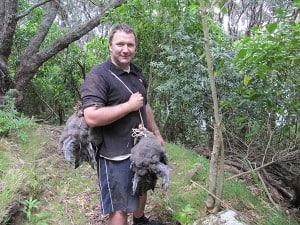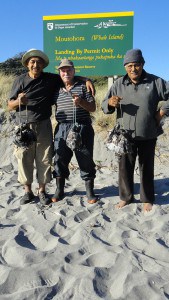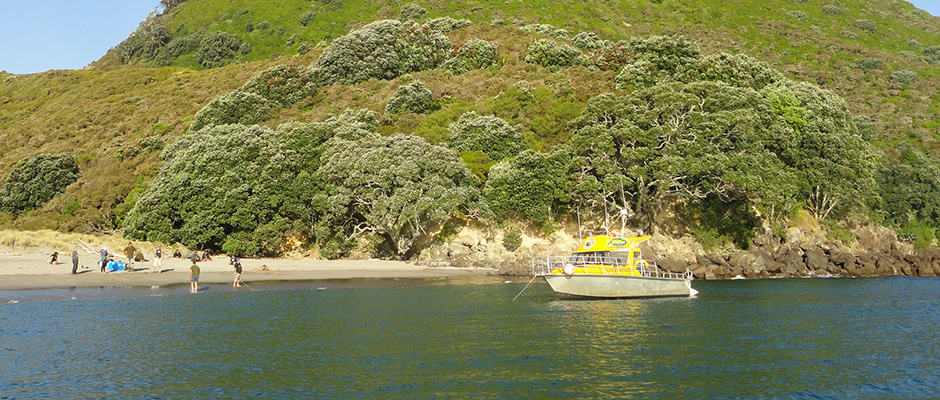Share this article
Managing a Burrowing Bird Population the Maori Way
The sustainable management of a bird population for food is all about mathematics, at least the way the Maori have always approached it.
New research tracking how these indigenous people from New Zealand harvest gray-face petrel (Pterodroma macroptera) chicks for food finds that they keep populations of the burrowing seabird at sustainable levels.

Gray-faced petrel chicks are tied together as a ‘hui’ (group or collection) before being carried back to the boat.
Image Credit: Phil Lyver
“Maori view their role (and the role of humans) as being subservient to elements of the natural world,” said Phil Lyver of Landcare Research and the lead author of a new study in The Journal of Wildlife Management. “The loss of that worldview within societies today is held partly responsible for the degraded state of biodiversity.”
The Maori people have been harvesting the seabirds since the 1300s in New Zealand, and the practice is important for their cultural tradition, identity and community, among other things. They don’t sell the birds commercially and only consume high-fat chicks, which has a lower impact on the growth of the population. In fact, Maori consider it a customary crime to harvest adults — a practice that appeared to be supported by researchers’ models, which showed that removing 25 percent or more of chicks or eggs had a similar impact to removing only 2 percent of adult birds.

Maori elders depart with their birds from Moutohorā (Whale Island, New Zealand).
Image Credit: Ray Thompson
Researchers also found that the Maori practice of rotating their harvest between some populations was effective — so much so that harvesting 75 percent of chicks once every three years wouldn’t cause population decline according to the modelling.
“Maori are aware the grey-faced petrel is an ecosystem engineer so they understand that if the numbers of birds decline then the whole island ecosystem suffers,” Lyver said, pointing out that, in the past, they were keen on removing rats from the islands where the petrels live as the rodents were laying waste to young chicks and eggs.
Populations of the gray petrels were declining in the past, prompting the New Zealand government to institute a prohibition on harvesting that lasted 50 years. The ban was recently lifted, allowing the Maori to resume their traditional harvest.
Finally, he said that while the researchers didn’t look at other elements of the Maori petrel harvest, another practice they conducted of not harvesting the most physically developed chicks also likely had a positive effect on the breeding population overall.
“Those are the ones with the highest probability of recruiting back into your population,” he said. “Again, you look after your potential breeding population.”
Header Image:
Maori bird harvesters land on Moutohorā (Whale Island, New Zealand) to re-establish a harvest of grey-faced petrel (Pterodroma gouldi) chicks after a 50-year prohibition was lifted by the government.
Image Credit: Ray Thompson








